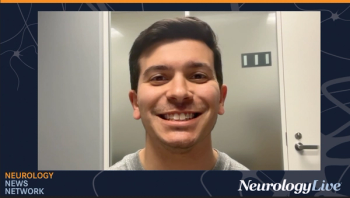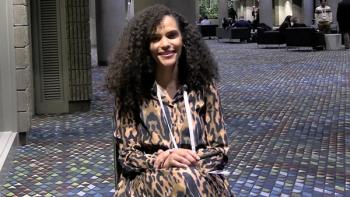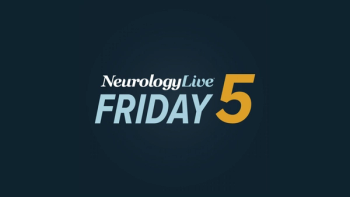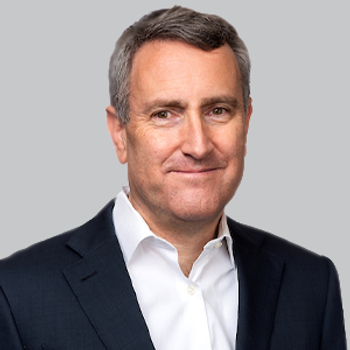
NeurologyLive® Top Stories of 2021: Stroke and Cerebrovascular Disease
These news stories in stroke and cerebrovascular disease were top of mind in the conversations in the field and were often included in NeurologyLive®’s coverage.
As the COVID-19 pandemic continued through 2021, many of the conversations within the stroke space centered around ensuring patients are provided access to stroke care, as well as whether the virus itself could impact the risk of stroke. Although there has been a rising amount of data on the associations between COVID-19 and stroke, there has not been a consistent answer on whether COVID-19 has a realistic chance to worsen stroke risk.
Much like the rest of the country, hospitals and other stroke centers continued to adapt to the conditions at hand. Despite this, the research and advancements within the field did not slow down. The space saw notable improvements in the capabilities to reach underserved communities, new methods and treatments for stroke prevention and recurrent stroke, and several incoming modalities within the pipeline to help rehabbing stroke survivors.
In a year that saw significant progress, the NeurologyLive® team worked diligently to stay on top of the news and provide top-level coverage for the clinical community on the most pressing matters at hand. To read more about relevant news in stroke and cerebrovascular disease, hear experts share insight on top discussions in the field, and learn more about the ongoing conversations, head to our
Click the buttons below to learn more about each story.
1. Accessible Stroke Care for Diverse Populations
Individuals in culturally diverse and underserved communities have been hit the hardest by pandemic, and at times have isolated themselves because of fears about the virus, vaccines, and whether they can trust the medical community. Providing equal access to stroke care for all populations, including those in these areas, remains a high priority for institutions like Montefiore.
In October, a feature written by NeurologyLive® focused on how their stroke center, led by Charles Esenwa, MD, and Daniel Labovitz, MD, MS, continues to support the diverse community around it by enabling quality access, raising stroke awareness, and improving poststroke outcomes in diverse populations. These ideals speak to the larger ideas within stroke care that generally dominate the space and are even more prevalent as the country continues to navigate the pandemic.
Esenwa, the director of Montefiore’s Comprehensive Stroke Center (known as the Stern Stroke Center), and an assistant professor of neurology at Albert Einstein College of Medicine, told NeurologyLive®, "Because we have such a diverse community, we’re able to get to the bottom of these differences: why are there differences in race and are those differences genetic—which is what some people were proposing—or are [they] truly independent of genetic makeup and…more to do with social status."
Raising the awareness of the signs for stroke has been a problem observed within these communities and across the general stroke field. According to the American Stroke Association, nearly 30% of US adults younger than 45 years don’t know all 5 of the most common stroke symptoms, with Hispanic adults and adults not born in the US about twice as likely to be unaware of these symptoms.1 Additionally, stroke systems of care are still in their infancy on the organizational front—many challenges have been identified that need addressing to improve patient outcomes. In August, M. Shazam Hussain, MD, FRCPC, FAHA, director, Cerebrovascular Center, Cleveland Clinic,
2. The Increased Emergence of Antiplatelet, Dual Antiplatelet Therapy
Aspirin, a commonly used antiplatelet, can help prevent a second stroke or transient ischemic attack, which is often a warning sign of a stroke. Since its marketization, the research on the efficacy of such antiplatelet therapies, and even dual antiplatelet therapy (DAPT) approaches, has improved.
In April, a specific study presented at the 2021 American Academy of Neurology (AAN) Annual Meeting, found that aspirin lowers the risk of ischemic stroke without increasing the risk of intracranial hemorrhage in patients with cerebral amyloid angiopathy.2 These findings further characterized the risks and benefits of antiplatelet agents for stroke prevention in this patient population and thus highlighted another way stroke prevention is improving.
Ticagrelor (Brilinta; AstraZeneca), the first-ever approved DAPT used in conjunction with aspirin, saw its efficacy profile expand in 2021, a year after it gained FDA greenlight.
Then, in December,
The prevention of secondary stroke was a linchpin of conversations in the cerebrovascular community in 2021, with the American Heart Association/American Stroke Association (AHA/ASA) publishing new guidance on its prevention this summer. In August, Sana Somani, MD, MBBS, and Prachi Mehndiratta, MBBS, FAHA, offered an
3. FDA Authorizes Neurolutions’ IpsiHand Stroke Rehab System
In April, the FDA granted de novo market authorization, as well as breakthrough device designation, to Neurolutions for its IpsiHand Upper Extremity Rehabilitation System to treat patients with chronic stroke. It marked the first FDA-approved device leveraging brain–computer interface technology to assist patients with chronic stroke in rehabilitation, and represented the major shift in how stroke is treated.5
Once thought of as an event that leaves patients often debilitated, the progress in technology and rehabilitation modalities has given hope for stroke survivors to return back to somewhat of their previous state. Designed for in-home or clinic use, the IpsiHand system includes a robotic exoskeleton that is worn over the patient’s hand and wrist, an electroencephalogram (EEG)-based headset, and a tablet. The lightweight, adjustable, battery-powered, robotic exoskeleton is designed to physically open and close the patient’s hand in response to the patient’s thoughts.
"Progress in improving rehabilitation outcomes for stroke patients has historically been challenging, but the market authorization of the IpsiHand System promises to usher in a bright future for our stroke patients and allows us to support their recovery throughout the rehabilitation process,” Eric Leuthardt, MD, chief scientific officer, Neurolutions, chief of Division of Neurotechnology and professor of neurosurgery and neuroscience, Washington University, said in a statement.
This challenge of post stroke care became a major talking point over the course of the year—just a few months later, in July, the AHA/ASA
REFERENCES
1. Nearly one in three young adults in the US does not known common stroke symptoms. News release. American Heart Association. October 26, 2020. Accessed December 23, 2021. https://newsroom.heart.org/news/ nearly-one-in-three-young-adults-in-the-u-s-does-not-know-common-stroke-symptoms
2. Jamali S, Lin M. Incident ischemic stroke and intracranial hemorrhage in patients with cerebral amyloid angiopathy on aspirin versus none. Presented at 2021 American Academy of Neurology Annual Meeting; April 17-22. Abstract P5 219
3. Wang Y, Pan Y, Li H, et al. Efficacy and safety of ticagrelor and aspirin in patients with moderate ischemic stroke: an exploratory analysis of the THALES randomized clinical trial. JAMA Neurol. Published online July 9, 2021. doi: 10.1001/jamaneurol.2021.2440
4. Lun R, Dhaliwal S, Zitikyte G, Roy DC, Hutton B, Dowlatshahi D. Comparison of ticagrelor vs clopidogrel in addition to aspirin in patients with minor ischemic stroke and transient ischemic attack. JAMA Neurol. Published online December 6, 2021. Doi:10.1001/jamaneurol.2021.4514
5. Neurolutions receives US Food and Drug Administration De Novo Market Authorization for IpsiHand Upper Extremity Rehabilitation System. News Release. April 26, 2021. Accessed December 23, 2021. https://www.globenewswire.com/news-release/2021/04/26/2216682/0/en/Neurolutions-Receives-U-S-Food-and-Drug-Administration-De-Novo-Market-Authorization-for-IpsiHand-Upper-Extremity-Rehabilitation-System.html
Newsletter
Keep your finger on the pulse of neurology—subscribe to NeurologyLive for expert interviews, new data, and breakthrough treatment updates.































